
Day Trip
A downloadable soundtrack
Okay, I think I need to explain what the heck's going on here.
I like to write music. You wouldn't know that from my itch.io page, which mainly consists of continually-in-development games and the rare engine plugin, but music theory and composition is a much-beloved hobby of mine that I've spent many, many hours learning about. (And when I say learning about, I mean watching video essays and going through many cycles of trial and error.) Day Trip is, in fact, the first publicly-released "album" that I've ever shared with anyone other than family and friends...it's a submission to the May 2021 OST Composing Jam, which tasked composers with writing a soundtrack to an imaginary video game. The only prompt was the text "A Journey to Remember", along with a pixel art image of a dirt path leading over foothills to large, snowcapped mountains.
The minimum time requirement to enter the jam is 3 minutes' worth of soundtrack material; I've more than exceeded that, with a total runtime of around 45 minutes, and I'm hoping that I'm not the only one who did that. It isn't that hard, in my mind, to transform a single motif to fit a variety of situations, and that's what I've done with Day Trip. If it were the soundtrack for an actual game, it'd be missing many hours of necessary music, and would likely consist of more than a single motif. I also haven't included any cinematic or event-driven music, only loopable background/environment tracks, but I think it's enough to get a basic idea of the tone and nature of the game.
When I say that the album is just one motif that's transformed ever so slightly from piece to piece, I may be exaggerating just a bit, but not that much. There's roughly two "original" motifs in the entire thing; distant relatives though some may seem, every melody in the album was derived from those two original motifs. But I'll get to that later.
Contents (feel free to jump to whatever section):
- Chords & Key Signatures
- Melodies & Motivic Development
- Instrumentation & Tone
- Track Listing / Descriptions
- Licensing
Chords & Key Signatures
The core of any soundtrack is its chord/key progression, as it sets the tone for pieces to follow (in the beginning), creates a unified whole out of distinctive parts (in the middle), and lets the listener be satisfied with the ultimate resolution (in the end). Now would be a good time to say that I'm going to use the terms "chord progression" and "key progression" somewhat interchangeably, because even though the chord progressions are a bit more flexible between tracks, each one follows the same basic key progression: i - v - ii - iii - v - i (Minor 1 - 5 - 2 - 3 - 5 - 1). Basically, even though you might have different chords in different songs, each progression of key changes follows that pattern. This progression was chosen very deliberately, based on the nature of the relationship between the keys and how they interact with each other.
The main melody is first played in the 1 key to establish it in the minds of the listener, before subtly switching to the 5 key for the repetition of the melody. That first 1-5 shift is an excellent way to both keep the song entertaining and keep the listener's attention, and is a device perfected through centuries of classical experimentation. It's followed by another 1-5 leap, except this one starts in the 5 key and goes up to the 2 key; we've now established this "fifth leap" as a common chord progression, and we take this opportunity to introduce whatever our "B" melody is for the piece. Instead of another fifth leap, the 2 key transitions directly into the 3 key, which is a half-step increase in the minor scale. This is another way to subvert the listener's expectations and recapture their mind, as they probably would have subconsciously been expecting another fifth leap. After repeating the B melody in the 3 key, we jump up a third--a transition which always sounds good, something I learned recently from a Caleb Hyles livestream with Jonathan Young--and return to our 5 key for another repetition of the main melody, or possibly a "C" melody if the piece requires, before dropping back down to our 1 key. That final 5-1 drop is, in classical terms, a "perfect cadence"; it means that it provides a strong sense of dramatic resolution, because it's almost exactly what the listener has been expecting. From there, the song repeats.
Melodies & Motivic Development
Anyone who's seen Hamilton, Les Misérables, or Phantom of the Opera--or most any musical theatre production, to be honest--knows the importance of motivic development, even though they may not be able to vocalize their understanding. The human brain runs on repetition; it's only natural that repeated elements in music create a stronger emotional connection between the piece and the listener. With that in mind, I chose to center my entire album around as few motifs as possible: That way, I'd be able to "get the most bang for my buck," as I could produce many songs simply by changing existing harmonies, instrumentation, tempo, and key signatures, without having to be creative enough to write a fresh melody every time.
I've said that there are really only two motifs in the entire 45-minute, 12-track album. Believe it or not, this is true. However, there are many more melodies than that; most of the songs seem somewhat distinct enough to be original, even if you can hear repeated elements in them. The trick is motivic development: modifying your motifs over time until they can stand on their own.
The "main", "peaceful", or "home" motif of Day Trip is the very first thing you'll hear: the flute solo from the first eight(?) bars of the first song. It gets modified by the saxophone repetition later on, cutting a four16th-note run down to two 8th notes, and appears again in its modified form in the second song. It remains relatively unchanged in the third (excluding the addition of a few emphatic notes to pep up the tone a little), but doesn't survive the fourth song unscathed. This song actually sees the introduction of the first major derivation: the "heroic" player's motif, seen again through various iterations in tracks 5, 8, 9, 10, 11, and 12 (this motif is most clearly seen in the piano section of track 10). Track 5 introduces the second major derivation: the "danger" or "enemy" motif, described by both the organ arpeggios in the introduction as well the flute/violin parts later on, and which reappears in tracks 8, 10, 11, and 12. The final derivation is based upon the "heroic" motif, and can be thought of as the "conclusion" or "resolution" motif: the phrase expressed in the first eight(?) bars of track 11 by a synth combination, and repeated immediately after by a brass section.
The "alternate", "conflict", or "travel" motif first appears in track 1, and has one major derivation (from track 3). Together, these two motifs can be found in nearly every song in the album, and even make up the main melody of track 7. More often than not, however, these motifs serve only to accentuate the main melody of the piece; not as much thought is given to developing them as is given to the first.
It's my hope that this soundtrack doesn't seem too repetitive because of its constant focus on one motif; in a world where I had written many albums' worth of music for a single game, such a hypothetical soundtrack would surely have included many motifs with many forms of motivic development. I'm well aware that I've really stretched out this one motif into twelve independent songs, and that I've probably reached the limit of what I can do with a single motivic idea. A more talented or more experienced composer could probably create an entire film score out of one idea (looking at you, John Williams), but I certainly can't.
Instrumentation & Tone
One of the hardest things to get right was the tone of the soundtrack. It will, by nature of its creation, be inherently "indie" and "lo-fi" even though that might not fit the tone of the imaginary game. I like using orchestral instruments and arrangements whenever possible, but it's also easier to find quality audio samples for synthetic instruments. I think I found a fair balance between the two, emphasizing both acoustic and electronic instruments at different points in the album. Unlike the first two topics we've discussed, there's no complicated logic behind the choices I made. For specific moods, I would try to think of an existing piece of video game music that had a similar tone, and take cues from its instrumentation. Does your town theme sound too intense? Try using an orchestral harp instead of a piano. Battle theme not intense enough? Get some fast electric guitar riffs in there. Want the listener to experience emotions? Piano solo, adding a violin during repetitions. That's about all that went into it.
I can't really place any of the tracks into a particular genre, other than "video game music" itself. They have a lot of influence from classical suites, contemporary and classic rock, European power metal, jazz fusion and RnB, and other video game music. I'm definitely open to suggestions, though.
Track Listing and Descriptions
- Title screen theme, potential title: "Day Trip"
- A flute, piano, synth and saxophone piece that's just tame enough to be menu music but exciting enough to pique your interest. Written in the key of Cm with a steady tempo of 100 BPM. (stem)
- Menu / options / pause / shop theme
- Nintendo has drilled into me the value of having a vibraphone and an acoustic guitar playing over a salsa-esque drumbeat as your generic "interface" theme, and I'm not about to disappoint. C#m, 112 BPM. (stem)
- Field theme
- I thought it would be nice to have a violin ostinato driving this piece, but instead you get synths all around. It's a little more happy than the title screen theme but not as upbeat as the previous one. Dm, 123 BPM.
- Town theme
- It sounds like an acoustic guitar (not really / well, maybe a little) but I promise you it's not. It's an orchestral harp. And, believe it or not, this track is actually directly based off of track 9. I'm that lazy. Em, 117 BPM. And yes, that is a Halo reference.
- Battle theme
- Finally, time for some string ostinatos! This track mixes an orchestral march with some synth texturing and the album's first electric guitar. (Man, these descriptions are getting shorter and shorter.) Fm, 112 BPM. (stem)
- Field theme (heroic version)
- What can I say? This is actually the full, semi-orchestral version of the Field theme which I had originally written, before I decided to pare it down to create its lesser counterpart. I think this one's in Dm as well, but in 135 BPM. (stem)
- City theme
- It's not actually just a reskin of the town theme. It's the only one that uses the alternate motifs as its main melody, so it's quite unique. Add a lot of dark percussion elements, and you're good to go! Em, 127 BPM. (stem)
- Boss battle theme
- Okay, this one is quite unique as well. Aside from beginning with that killer electric guitar fade-in, it's also the only song on the album written in 3/4 time (even though it dips briefly back into 4/4 at one point). Fm, 135 BPM. (stem)
- Reflection theme, potential title: "A Journey Remembered"
- It begins as a piano solo, then becomes accompanied by a small string section, then acoustic guitars and brass, before finishing with the main motifs played on a music box. Did it work? Are you crying? Em, 97 BPM. (stem)
- Final boss theme
- Perhaps my favorite song on the album, this one is an intense power metal-ish ballad about the player completing the final challenge. It's got everything, and then some. Am, 157 BPM. (stem)
- Conclusion theme, potential title: "Congratulations!"
- Congratulations! Cm, 125 BPM. (stem)
- Credits theme
- This one's a bit more lazy than the others. Not only does the main "melody" (if you can even call it that) only kick in after an entire eight-bar section of chords has passed, the melody itself is missing notes. No, on purpose. I did that to make it sound more etherial. Dm, 135 BPM. (stem)
I use onlinesequencer.net to write MIDI files before importing them into SoundTrap.com for proper rendering/mastering; this comes with the unintended benefit of having the stems of all these songs being publicly available (see links above) as well as having them timestamped--I realize that a 45-minute, 12-song album is a lot to write in a week, and that people might wonder if I wrote any elements of it beforehand. While doing so would be allowed per the rules of the competition, that is simply not the case. And, yes, all of the songs are hand-written, hand-arranged in a MIDI piano roll editor; it's a massive time commitment, even for only using one motif, and I've only been able to work on it at night after I finish my day job.
Licensing
This album (the downloads on this itch.io page) is being released for free under the CreativeCommons Attribution-NonCommercial-ShareAlike 4.0 International (CC-A-NC-SA 4.0 I) licensing agreement. If you wish to obtain a commercial use license, message me on itch and we'll work something out (though I don't foresee a big demand for that lol). I've also included the unedited MIDI stems in the download in case you feel the need to remix it, though I don't know how helpful they'll be.
| Status | Released |
| Category | Soundtrack |
| Author | Cormorant42 |
| Genre | Adventure |
| Tags | memoir, Music |
Download
Click download now to get access to the following files:
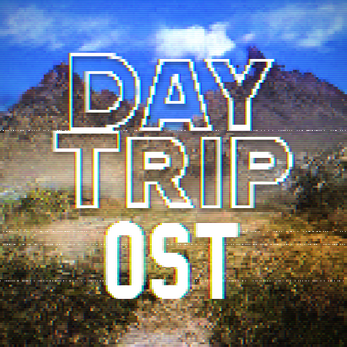


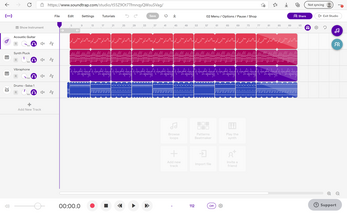
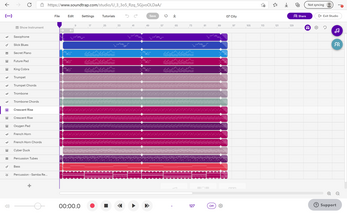



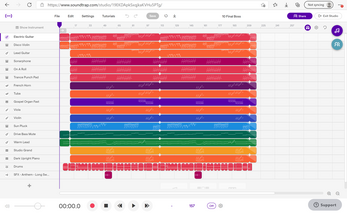
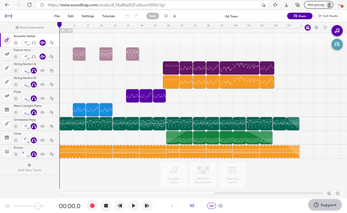
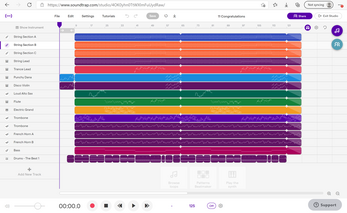


Leave a comment
Log in with itch.io to leave a comment.